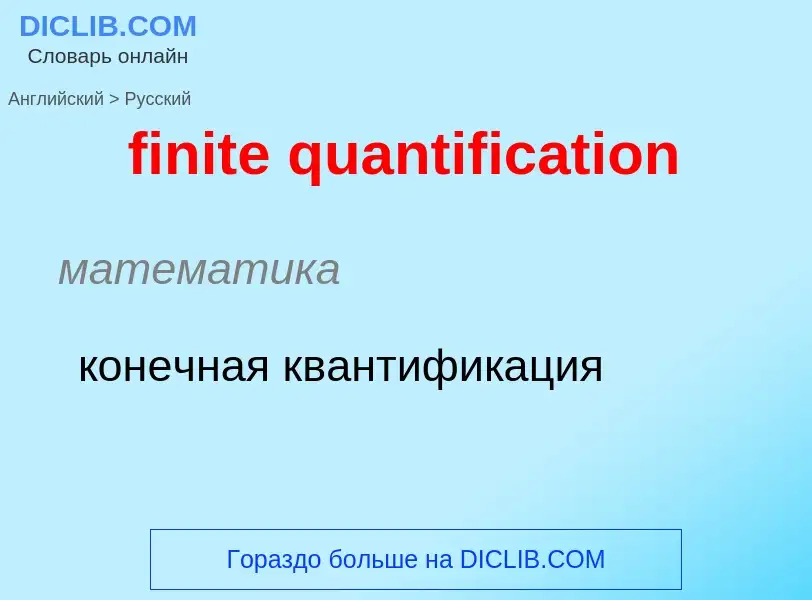Übersetzung und Analyse von Wörtern durch künstliche Intelligenz ChatGPT
Auf dieser Seite erhalten Sie eine detaillierte Analyse eines Wortes oder einer Phrase mithilfe der besten heute verfügbaren Technologie der künstlichen Intelligenz:
- wie das Wort verwendet wird
- Häufigkeit der Nutzung
- es wird häufiger in mündlicher oder schriftlicher Rede verwendet
- Wortübersetzungsoptionen
- Anwendungsbeispiele (mehrere Phrasen mit Übersetzung)
- Etymologie
finite quantification - Übersetzung nach russisch
математика
конечная квантификация
математика
поглощающее состояние
строительное дело
расчёт методом конечных элементов
Wikipedia
In logic a branching quantifier, also called a Henkin quantifier, finite partially ordered quantifier or even nonlinear quantifier, is a partial ordering
of quantifiers for Q ∈ {∀,∃}. It is a special case of generalized quantifier. In classical logic, quantifier prefixes are linearly ordered such that the value of a variable ym bound by a quantifier Qm depends on the value of the variables
- y1, ..., ym−1
bound by quantifiers
- Qy1, ..., Qym−1
preceding Qm. In a logic with (finite) partially ordered quantification this is not in general the case.
Branching quantification first appeared in a 1959 conference paper of Leon Henkin. Systems of partially ordered quantification are intermediate in strength between first-order logic and second-order logic. They are being used as a basis for Hintikka's and Gabriel Sandu's independence-friendly logic.






![(b) The [[sparse matrix]] ''L'' of the discretized linear system (b) The [[sparse matrix]] ''L'' of the discretized linear system](https://commons.wikimedia.org/wiki/Special:FilePath/Finite element sparse matrix.png?width=200)



